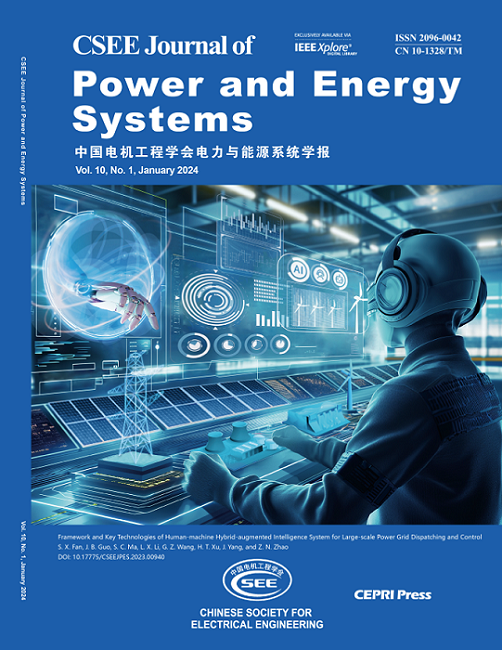Communication Resources Allocation for Time Delay Reduction of Frequency Regulation Service in High Renewable Penetrated Power System
IF 5.9
2区 工程技术
Q2 ENERGY & FUELS
引用次数: 0
Abstract
The high renewable penetrated power system has severe frequency regulation problems. Distributed resources can provide frequency regulation services but are limited by communication time delay. This paper proposes a communication resources allocation model to reduce communication time delay in frequency regulation service. Communication device resources and wireless spectrum resources are allocated to distributed resources when they participate in frequency regulation. We reveal impact of communication resources allocation on time delay reduction and frequency regulation performance. Besides, we study communication resources allocation solution in high renewable energy penetrated power systems. We provide a case study based on the HRP-38 system. Results show communication time delay decreases distributed resources' ability to provide frequency regulation service. On the other hand, allocating more communication resources to distributed resources' communication services improves their frequency regulation performance. For power systems with renewable energy penetration above 70%, required communications resources are about five times as many as 30% renewable energy penetrated power systems to keep frequency performance the same.在可再生能源高度渗透的电力系统中分配通信资源以减少频率调节服务的时间延迟
可再生能源渗透率高的电力系统存在严重的频率调节问题。分布式资源可以提供频率调节服务,但受到通信时延的限制。本文提出了一种通信资源分配模型,以减少频率调节服务中的通信时延。通信设备资源和无线频谱资源被分配给参与频率调节的分布式资源。我们揭示了通信资源分配对减少时延和频率调节性能的影响。此外,我们还研究了可再生能源渗透率高的电力系统中的通信资源分配方案。我们提供了一个基于 HRP-38 系统的案例研究。结果表明,通信时延会降低分布式资源提供频率调节服务的能力。另一方面,将更多的通信资源分配给分布式资源的通信服务可提高其频率调节性能。对于可再生能源渗透率超过 70% 的电力系统,要保持频率性能不变,所需的通信资源约为可再生能源渗透率为 30% 的电力系统的五倍。
本文章由计算机程序翻译,如有差异,请以英文原文为准。
求助全文
约1分钟内获得全文
求助全文
来源期刊

CSEE Journal of Power and Energy Systems
Energy-Energy (all)
CiteScore
11.80
自引率
12.70%
发文量
389
审稿时长
26 weeks
期刊介绍:
The CSEE Journal of Power and Energy Systems (JPES) is an international bimonthly journal published by the Chinese Society for Electrical Engineering (CSEE) in collaboration with CEPRI (China Electric Power Research Institute) and IEEE (The Institute of Electrical and Electronics Engineers) Inc. Indexed by SCI, Scopus, INSPEC, CSAD (Chinese Science Abstracts Database), DOAJ, and ProQuest, it serves as a platform for reporting cutting-edge theories, methods, technologies, and applications shaping the development of power systems in energy transition. The journal offers authors an international platform to enhance the reach and impact of their contributions.
 求助内容:
求助内容: 应助结果提醒方式:
应助结果提醒方式:


